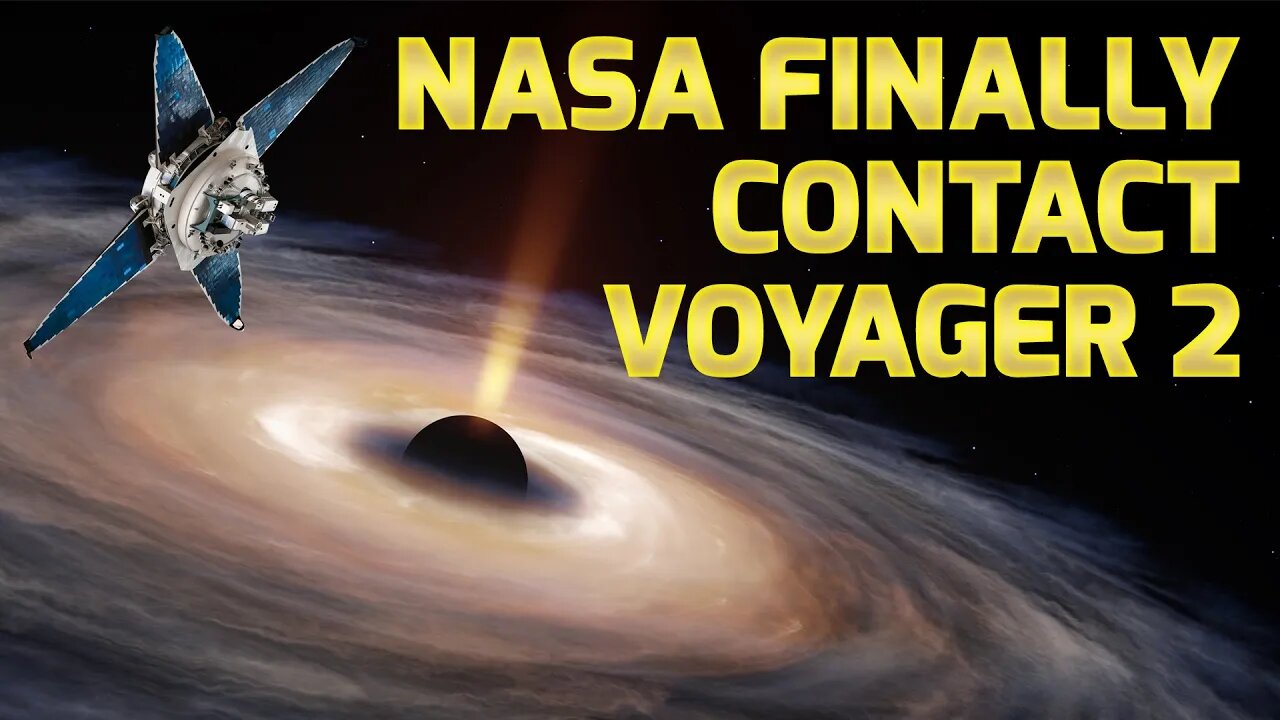Premium Only Content

Earth to Voyager 2: After a Year in the Darkness, We Can Talk to You Again
NASA finally makes contact with Voyager 2 after longest radio silence in 30 years!
There's never been a radio silence quite like this one. After long months with no way of making contact with Voyager 2, NASA has finally reestablished communications with the record-setting interstellar spacecraft.
The breakdown in communications – lasting since March, almost eight months and a whole pandemic ago – wasn't due to some rogue malfunction, nor any run-in with interstellar space weirdness (although there's that too).
In this instance, it was more a case of routine maintenance. And yet, when you're one of the farthest-flying spacecraft in history – leaving Earth and even the entire solar system behind you – nothing much is ever truly routine.
In March, NASA announced that Deep Space Station 43 (DSS-43) in Australia, the only antenna on Earth that can send commands to Voyager 2, required critical upgrades and would need to shut down for approximately 11 months for the work to be completed.
During this window, Voyager 2, which is currently over 18.7 billion kilometers (11.6 billion miles) away from Earth and getting farther all the time, wouldn't be able to receive any communications from Earth, although its own broadcasts back to us would still be received by scientists.
As it stands, DSS-43's renovation is still underway and on track to be finalized in February 2021, but enough of the upgrades have been installed for preliminary testing to start.
Last week, mission operators sent their first communications to Voyager 2 since March, issuing a series of commands, and NASA reports that Voyager 2 returned a signal confirming it had received the instructions, and executed the commands without issue.
Successful pings between radio antennas and spacecraft aren't usually newsworthy events, but Voyager 2 is such a storied and historic probe (NASA's longest-running space mission in fact), it rightfully gets special attention – especially in situations like this, involving a period of one-way radio silence so long, it's effectively unprecedented.
According to NASA, DSS-43 hasn't been offline for this long in over 30 years. The old radio antenna that needed replacing – the only one in the world capable of broadcasting to Voyager 2 – had been in use for over 47 years.
As part of the refurb, DSS-43 is getting two new antennas, upgraded heating and cooling equipment, power supply equipment, and other electronics to support the new transmitters. When the work is complete, the upgrades will provide longevity to a cornerstone of a facility that's already legendary.
"What makes this task unique is that we're doing work at all levels of the antenna, from the pedestal at ground level all the way up to the feedcones at the centrer of the dish that extend above the rim," says NASA Deep Space Network project manager Brad Arnold.
"This test communication with Voyager 2 definitely tells us that things are on track with the work we're doing."
As for why DSS-43 is the only dish in the world that can reach Voyager 2, the reason isn't purely technological. As a result of the probe's flyby of Neptune's moon Triton in 1989, Voyager 2's trajectory steered significantly southward relative to the Solar System's plane of planets, meaning earthbound antennas in the northern hemisphere have no way of reaching it.
For antennas Down Under, though, it's no biggie – unless you get taken offline for almost a year of critical upgrades. Even then, though, scientists never stopped thinking about Voyager 2, and kept a close eye on its vitals.
"We've always been talking to the spacecraft. We've been doing that daily," Suzanne Dodd, the project manager for the Voyager Interstellar Mission, told CNN.
-
 18:38
18:38
VSiNLive
1 day agoProfessional Gambler Steve Fezzik LOVES this UNDERVALUED Point Spread!
90K11 -
 LIVE
LIVE
Right Side Broadcasting Network
10 days agoLIVE REPLAY: President Donald J. Trump Keynotes TPUSA’s AmFest 2024 Conference - 12/22/24
6,251 watching -
 4:31
4:31
CoachTY
20 hours ago $19.28 earnedCOINBASE AND DESCI !!!!
97.8K8 -
 10:02
10:02
MichaelBisping
19 hours agoBISPING: "Was FURY ROBBED?!" | Oleksandr Usyk vs Tyson Fury 2 INSTANT REACTION
47.2K8 -
 8:08
8:08
Guns & Gadgets 2nd Amendment News
2 days ago16 States Join Forces To Sue Firearm Manufacturers Out of Business - 1st Target = GLOCK
84.5K82 -
 10:17
10:17
Dermatologist Dr. Dustin Portela
2 days ago $17.24 earnedOlay Cleansing Melts: Dermatologist's Honest Review
127K10 -
 1:02:20
1:02:20
Trumpet Daily
2 days ago $39.71 earnedObama’s Fake World Comes Crashing Down - Trumpet Daily | Dec. 20, 2024
85.1K57 -
 6:29
6:29
BIG NEM
1 day agoCultivating God Mode: Ancient Taoist NoFap Practices
63.2K9 -
 30:53
30:53
Uncommon Sense In Current Times
2 days ago $10.66 earned"Pardon or Peril? How Biden’s Clemency Actions Could Backfire"
77.9K5 -
 40:01
40:01
CarlCrusher
1 day agoSkinwalker Encounters in the Haunted Canyons of Magic Mesa - ep 4
72.4K6